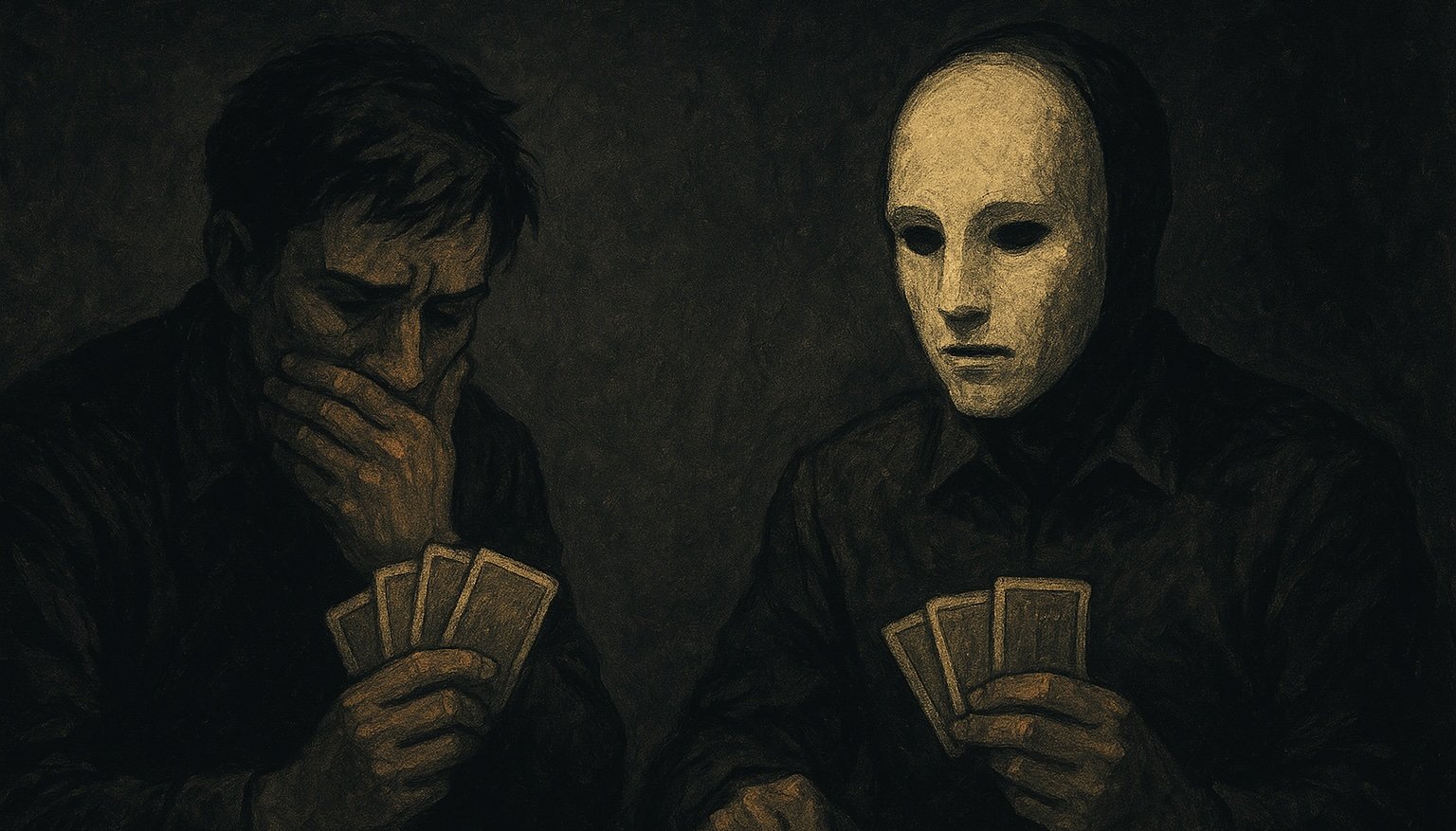The Shame Game
Opening Move
We have all played it. Many of us play it without even knowing. The Shame Game is not a choice most of the time—it is a reaction. It begins with injury, pain, or disappointment, and from that vulnerable place, something sharp rises: defense. That defense, often charged with anger, frustration, or icy silence, seeks to transmit the pain outward. And the chosen currency? Shame—destructive, distorting, and spent without consent.
The Shame Game is a pattern, a loop, an energetic relay race in which unprocessed pain becomes the baton passed from one hand to the next. One person feels hurt. They react in a way that causes hurt. The next person reacts in turn. And the game continues. It is a game of hot coals, passed from hand to hand so no one burns for too long, with the rules occasionally encouraging you to burn someone alive.
Or perhaps it is more like poker.
In the Shame Game, no one shows their cards. Everyone holds their pain close, their fear closer, and their truth tucked behind bluff and bravado. The game rewards those who conceal their vulnerability and punish those who reveal too much. Vulnerability becomes a liability, and power is won through deception and control. To survive the hand, you must mask your feelings. To win the round, you must read the other's shame better than they read yours.
The Rules of Play
Shame never comes alone. It is always secondary—a mask, a messenger, a signal. Beneath every shame reaction lives something tender: the fear of unworthiness, the wound of being unseen, the ache of abandonment, the tremble of rejection. These are the soft places that shame hardens against. It steps in when we feel we cannot afford to feel.
At the heart of the Shame Game lies one devastating lie: that we are not enough. Every move, every mask, every missile of pain is an attempt to protect that aching belief. To be caught in the game is to forget your inherent worth—and to fear that if others see you truly, they will agree with your worst suspicion. But shame dissolves when worth is remembered.
Shame is not simply an emotion. It is an energetic transmission. It moves through tone, posture, silence, sarcasm, accusations, moralizing language, or even apologizing too quickly. It is how we discharge what feels unbearable, transferring that energy into the body of another.
And then, they do the same.
The Players at the Table
In this patterned game of reflex and defense, we often assume roles—some familiar, some subtle. These roles are not who we are; they are who we become when shame governs our behavior. Each role is a costume draped over a trembling truth.
Here are only a few of the many roles we play in the Shame Game:
The Wounded Avenger
Transmits pain through righteous indignation. "You hurt me, so now I must show you how much."
The Apologetic Martyr
Collapses into guilt to diffuse tension. Takes on all blame in hopes of being loved again.
The Dismissive Stoic
Detaches from emotion. Pretends it did not matter. Keeps control by showing nothing.
The Shame Thrower
Launches sarcasm, cutting words, or disdain to avoid feeling weak. The shame is launched in a container of ridicule.
The Stonewall
Goes cold, quiet, and unreachable. Their silence speaks: "I cannot afford to engage."
The Inverter
Flips the dynamic: "Actually, you are the one hurting me." Projects their own shame outward, often believing in their own superior pain.
The Rationalizer
Intellectualizes everything. Offers logic instead of emotion. Shame hides behind reason.
The Performer
Uses humor, charm, or deflection. Shame becomes a mask of entertainment.
The Shamer
Builds identity around making others feel small. Master of projection. Often comes from deep early wounding.
The Silent Absorber
Takes it all in. Says nothing. Believes they deserve the shame. It builds silently inside.
The Cleaner
Tries to fix it all. Over-apologizes. Over-functions. Cannot stand being seen as harmful or messy.
Each role is a way to protect the inner self from unbearable feeling. And we all move through these roles, often in the same conversation. Recognizing them is not about blame—it is about seeing the game so we can step out of it.
Changing the Game
So how do we exit the loop? We meet shame with presence. We recognize that we are in the game, and we choose to pause. This moment of pause is everything.
From there, we might:
Name the shame: "I feel ashamed that I spoke that way."
Own the injury: "That hurt, and part of me wants to defend."
Reclaim sovereignty: "I choose not to pass this pain on."
Feel the body: Let the sensation move. Let it burn. Let it go.
To feel shame without flinching is to step out of the costume, to bow before the mirror, and to meet yourself whole.
When we move from reactivity into presence, the game begins to dissolve. What replaces it is what we might call the Truth Game:
Honesty with compassion.
Vulnerability without collapse.
Repair without blame.
Truth cannot be shamed—it welcomes all of itself.
Game Over
The Shame Game thrives on secrecy and reactivity. It ends when someone is willing to feel, to own, and to speak from love. This piece is a map, not a mandate. May it help us all recognize the shape of shame, the ways we wear it, and the choices we have to lay it down.
The game ends where truth begins.
